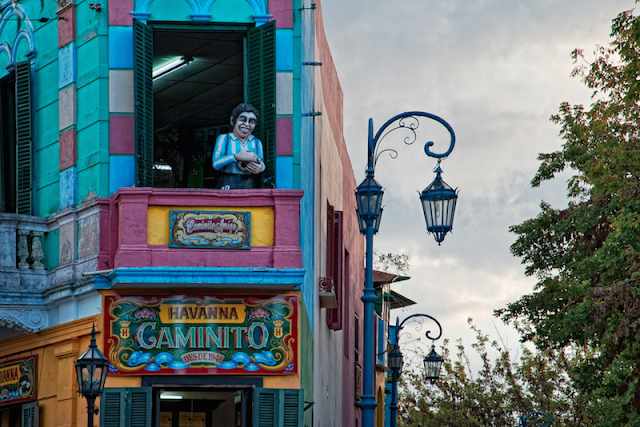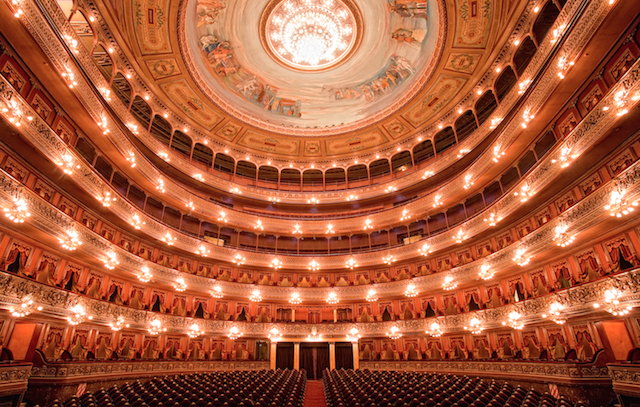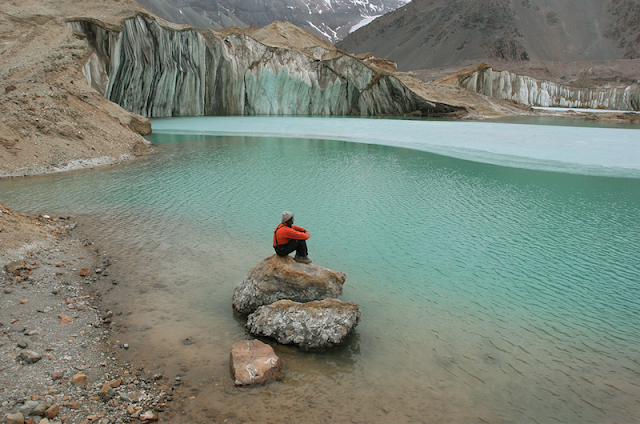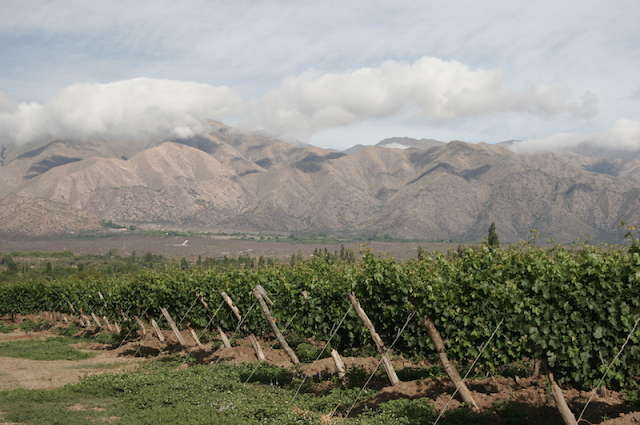Argentinian Ambassador Roberto Bosch sums up Argentina’s colorfully diverse culture. Dive into Argentinian culture and learn what to expect when planning a trip to this country rich in gastronomic discoveries, lively people, and countless sights to see from a man who knows it best.
Part 1: Gaining an understanding
It’s a country that loves tourists. “Most people are ready
to help anyone read a map, understand the transportation system, or look for a
good restaurant,” the Ambassador explains. The four seasons are clearly differentiated. The weather varies a
lot between the cold South, humid Buenos Aires, and the dry and calid
Northwest. It’s safe for tourists, “but, as in any other part of
the world, it is important to be prudent and stay alert of pickpocketing and avoid
unknown areas especially at night.”
to help anyone read a map, understand the transportation system, or look for a
good restaurant,” the Ambassador explains. The four seasons are clearly differentiated. The weather varies a
lot between the cold South, humid Buenos Aires, and the dry and calid
Northwest. It’s safe for tourists, “but, as in any other part of
the world, it is important to be prudent and stay alert of pickpocketing and avoid
unknown areas especially at night.”
 |
| Argentina has many quirky neighborhoods and corner cafes to explore |
Part 2: Discover what to eat
1. Asado. This is a generic term for different kinds of meat, including
a specific beef cut with bones, cooked on a grill over live coal. It normally also
includes beef cuts like vacio or matambre, as well as sausages, kidney, and
sweetbreads. Mollejas (sweetbreads)
are definitely worth trying. (Tip: For the best asado, visit La Cabrera | www.parrillalacabrera.com.ar, El Pobre Luis | Arribeños 2393 esquina Blanco Encalada, Belgrano, Buenos Aires, Lo de Charly | www.parrillalodecharly.com.ar, El 22 | www.parrillael22.com or | Don Julio | www.parrilladonjulio.com.ar)
a specific beef cut with bones, cooked on a grill over live coal. It normally also
includes beef cuts like vacio or matambre, as well as sausages, kidney, and
sweetbreads. Mollejas (sweetbreads)
are definitely worth trying. (Tip: For the best asado, visit La Cabrera | www.parrillalacabrera.com.ar, El Pobre Luis | Arribeños 2393 esquina Blanco Encalada, Belgrano, Buenos Aires, Lo de Charly | www.parrillalodecharly.com.ar, El 22 | www.parrillael22.com or | Don Julio | www.parrilladonjulio.com.ar)
2. Empanadas. These come in different regional versions, but I
particularly prefer the salteñas.
particularly prefer the salteñas.
3. Patagonian lamb. The
ones from the South are the best.
ones from the South are the best.
4. Local stews like locro or carbonada and humita, particulary in the Northwest area.
5. Don’t leave Argentina
without trying dulce de leche, and
products made with it like alfajores.
without trying dulce de leche, and
products made with it like alfajores.
 |
| Asado made the Buenos Aires way |
Part 3: Know where your feet should take you
1. For a taste of culture:
Colon Theatre | www.teatrocolon.org.ar and Librería El Ateneo | Avenida Santa Fe 1860, 1123 Buenos Aires
Colon Theatre | www.teatrocolon.org.ar and Librería El Ateneo | Avenida Santa Fe 1860, 1123 Buenos Aires
2. For or a wine tour:
Mendoza and Cafayate, Salta
Mendoza and Cafayate, Salta
3. For
a nature trip: Bariloche, Villa La Angostura, Iguazú, and Calafate
a nature trip: Bariloche, Villa La Angostura, Iguazú, and Calafate
4. To learn more about
dinosaurs: El Chocón in Neuquén and the National Museum of Natural Science | www.museo.fcnym.unlp.edu.ar in La Plat
dinosaurs: El Chocón in Neuquén and the National Museum of Natural Science | www.museo.fcnym.unlp.edu.ar in La Plat
5. To see notable
architecture: Colon Theatre, Avenida de Mayo between Casa Rosada and
the Congress
architecture: Colon Theatre, Avenida de Mayo between Casa Rosada and
the Congress
6. To taste the best
Malbec: any wine bar in the big cities, any estate in Mendoza and Salta. In
Buenos Aires, IThe Ambassador recommends the Gran Bar Danzon | granbardanzon.com.ar
Malbec: any wine bar in the big cities, any estate in Mendoza and Salta. In
Buenos Aires, IThe Ambassador recommends the Gran Bar Danzon | granbardanzon.com.ar
 |
| Inside the majestic Teatro Colon |
Part 4: Learn what to say
1. Che
With no
direct English translation, this may mean “hey,” “pal,” or “mate,” but not
exactly. It is generally used to call attention (like “hey” in English), but it
can also be used as “man” or “dude.” For example, you can hear “Che, salimos hoy?” which means “Hey, are
we going out tonight,” or “Che, no se
puede creer,” like “Man, I can’t believe it!” In other Latin American
countries, the term “che” is used to
refer to someone from Argentina.
direct English translation, this may mean “hey,” “pal,” or “mate,” but not
exactly. It is generally used to call attention (like “hey” in English), but it
can also be used as “man” or “dude.” For example, you can hear “Che, salimos hoy?” which means “Hey, are
we going out tonight,” or “Che, no se
puede creer,” like “Man, I can’t believe it!” In other Latin American
countries, the term “che” is used to
refer to someone from Argentina.
2. Pibe,
mina
mina
Slang for
guy and gal.
guy and gal.
3. Asado, Parrilla
Asado is a generic term for all kinds of
beef roasted in a parrilla (charcoal
or wood grill). Its meaning is close to barbecue, but it is something
different, especially after trying an authentic one in Argentina. Asado is also a specific cut of beef,
like short ribs. Parrilla is both the
grill and the restaurant where you eat asado.
beef roasted in a parrilla (charcoal
or wood grill). Its meaning is close to barbecue, but it is something
different, especially after trying an authentic one in Argentina. Asado is also a specific cut of beef,
like short ribs. Parrilla is both the
grill and the restaurant where you eat asado.
4. Bondi,
Subte
Subte
Bondi means bus. Bus transport is very
safe, cheap, and convenient in Argentina. Subte
is the metro, also with very good connections for many places of Buenos Aires.
safe, cheap, and convenient in Argentina. Subte
is the metro, also with very good connections for many places of Buenos Aires.
5. Cómo
andás?
andás?
More
common form of “How do you do?” We also use “cómo estás?” and “cómo va?”
or “Todo bien?” (Is everything ok?).
For all the questions, the most typical response is “Todo bien,” (Very well.) or “Todo
bien, y vos?” (I’m good. How about you?)
common form of “How do you do?” We also use “cómo estás?” and “cómo va?”
or “Todo bien?” (Is everything ok?).
For all the questions, the most typical response is “Todo bien,” (Very well.) or “Todo
bien, y vos?” (I’m good. How about you?)
6. Trucho
Someone
or something that is fake or low quality.
or something that is fake or low quality.
Part 5: Further reading
What are Argentinians like?
Argentines are very friendly and helpful. We are passionate and we apply this passion to whatever we do. We love to talk, discuss, and argue. We love our country, but we complain a lot about it. We love to spend time with our friends and our family. We enjoy life.
When is the best time to go to Argentina?
It depends on what you want to do. If you want to practice winter sports in Bariloche, Las Lenas, Villa La Angostura, or Ushuaia, the best time is the South Hemisphere winter (June to September). If your trip is for tasting wines or having wine tours, it is best to go in autumn, during the wine harvest in March. For the provinces of the Northwest like Salta, Jujuy, and Tucuman, with their beautiful sceneries and colonial past, the best season is spring.
 |
| A historical adventure in Salta |
Meanwhile, September and October are the best months for whale watching in Puerto Madryn. Cordoba, in the center of Argentina, is very nice in spring and summer, with nice temperate weather and beautiful mountains and rivers. Buenos Aires is empty in January, as most people take holidays during this month. It is nice because there is no traffic and the city lowers a little bit from its normal hectic rhythm, but you have to be ready for the hot and humid days.
 |
| Argentina’s charm changes with every season — especially when exploring its great natural wonders |
Where should visitors go for a taste of local life?
Local life varies a lot in different parts of Argentina, but walking in the cities is a good way to get an idea of this. You can also go to a café in Buenos Aires on any afternoon for a cultural experience, wander around in Libreria el Ateneo, or go to the Boca Juniors stadium before having a pizza in the La Boca neighbourhood. Or you can travel one hour from Buenos Aires and have an asado in Luján or San Antonio de Areco. There are plenty of opportunities to taste the Argentinean way of life.
Where is the best place to learn the Tango?
The best place to learn is in Buenos Aires. Even if tango is expanding quickly in other parts of Argentina, its berth is Buenos Aires, and it is there where most of the best schools and teachers are established. There are several schools and private teachers, but the best way to learn is to combine a good number of private and group lessons with the actual practice in a milonga, a place where tango dancers gather just to dance.
 |
| A typical sight at a milonga |
What is your favorite Argentinian wine?
I like blends with a good part of malbec and cabernet sauvignon. Of course I appreciate pure malbecs, but it depends on the occasion and the food I am having. The malbec, for example, is the perfect company for Argentinean beef.
Why is everyone raving about Argentinian steaks?
Argentine beef is extraordinary. It is leaner and more flavorful than steaks from other parts of the world because of how the cows are raised. Animals eat grass, in open pasture, and they live in big extensions of land. We take good care on the preparation of a good asado – from the selection of the different cuts, the seasoning (only with salt), and the grilling over live coals. Having a good talk among friends and family while waiting for the asado to get done is also part of it.
What are the must-try restaurants in Buenos Aires?
For beef, La Cabrera is a good option as it is one of the greatest parrillas in Buenos Aires. I also like Aquellos Años. El Sanjuanino or La Querencia are good for empanadas and regional food.
What should tourists not miss?
Trying a mate is a good idea because it is very difficult to understand what it is without trying it.
And there you have it! You know have a better understanding of what to expect in Argentina. What would you like to do first? For travelers looking for trips to roads less traveled, check out this feature that gives you eight awesome reasons to visit the Gem State, Idaho, USA.



